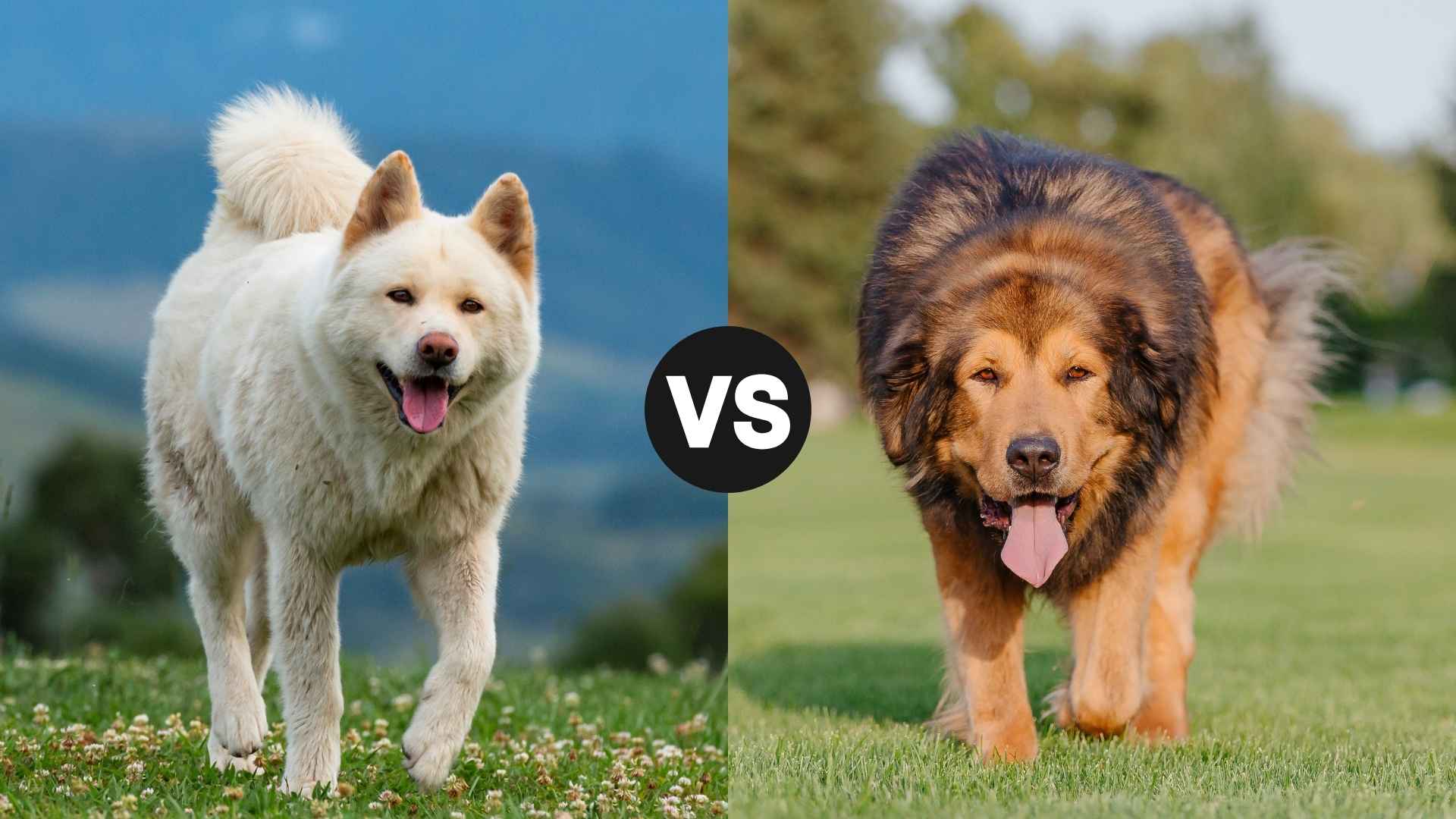When it comes to powerful guardian breeds with ancient roots, the debate of Akita vs Tibetan Mastiff often takes center stage. Both of these large dog breed, and were bred for protection—one in the snowy mountains of Japan, the other in the remote highlands of Tibet.
The Akita, with its plush double coat, curled tail, and dignified stance, was once a fearless hunting companion. Loyal yet aloof, this breed is best suited for experienced pet parents. On the other hand, the Tibetan Mastiff is a majestic mountain guardian known for its lion-like mane and fiercely protective nature. Though incredibly loyal to their families, these dogs are independent, territorial, and not particularly social.
Choosing between the Akita and Tibetan Mastiff means understanding their distinct personalities, physical traits, and care needs. In this post, we’ll compare the Akita vs. Tibetan Mastiff to help you decide which noble breed might be the right fit for your home.
Akita vs. Tibetan Mastiff
Originating from the snowy mountains of northern Japan, the Akita is a courageous and powerful working dog once revered as a hunter of boars, deer, and even bears. Bred for strength and courage, the Akita has a muscular build, broad head, erect pointed ears, and a curled tail. As noted by AKC, Akitas were historically dubbed “snow country dogs” and were officially recognized as a natural monument by the Japanese government in 1931.
Though majestic and affectionate with its people, the Akita is not ideal for multi-pet households or homes with small children. Its protective instincts make it a natural guardian for families, and today, Akitas are often trained for police or security work. Their history, strength, and devotion continue to make them a breed of great respect.
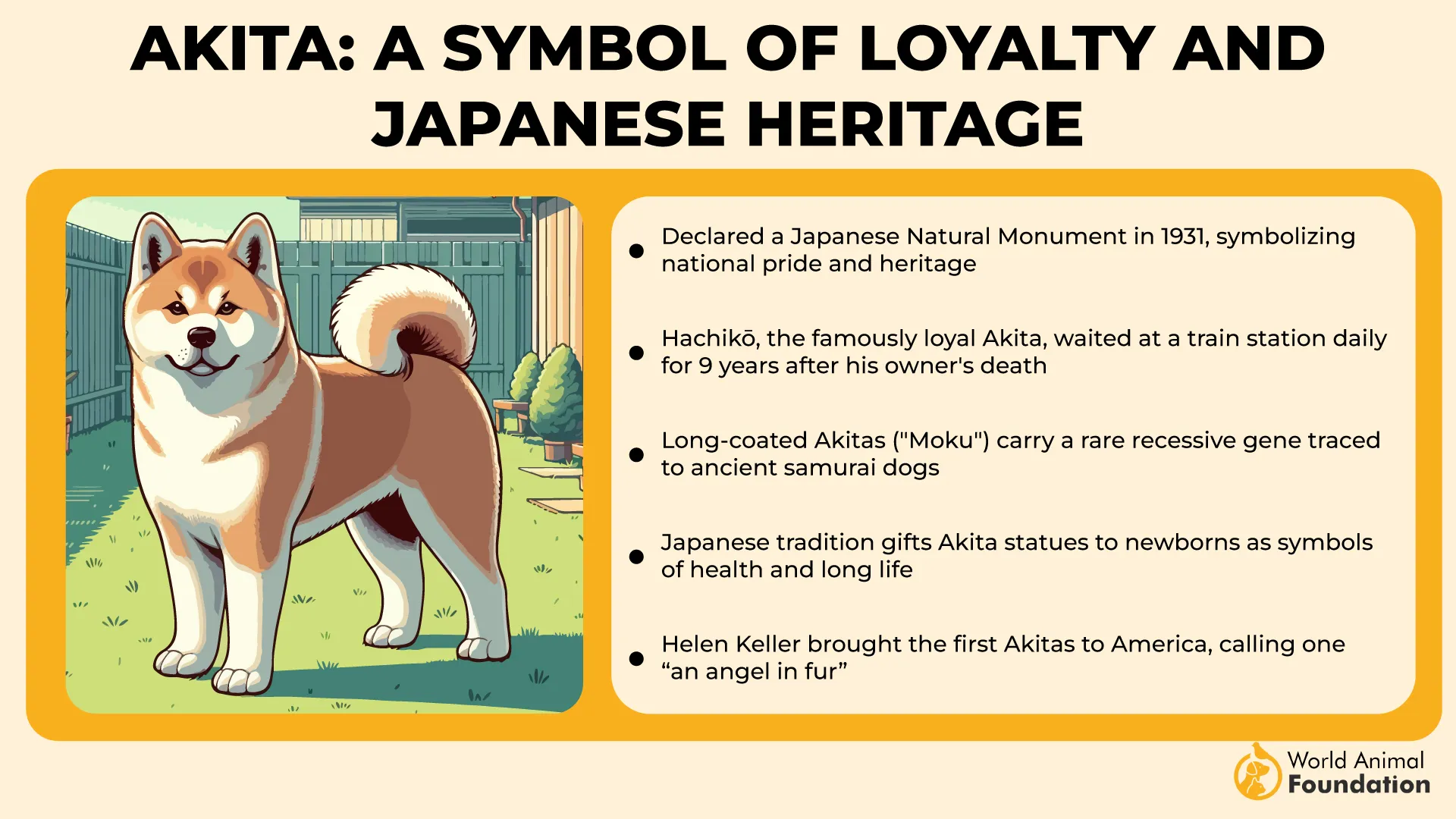
The Tibetan Mastiff is an ancient guardian breed from Central Asia, believed to have existed since the 12th century B.C. Known for its towering presence, flowing mane, and lion-like expression, this dog once protected Tibetan villages, monasteries, and nomadic herders from predators like wolves and snow leopards. Bred for independence and territorial guarding, the Tibetan Mastiff has a deeply rooted instinct to protect and patrol.
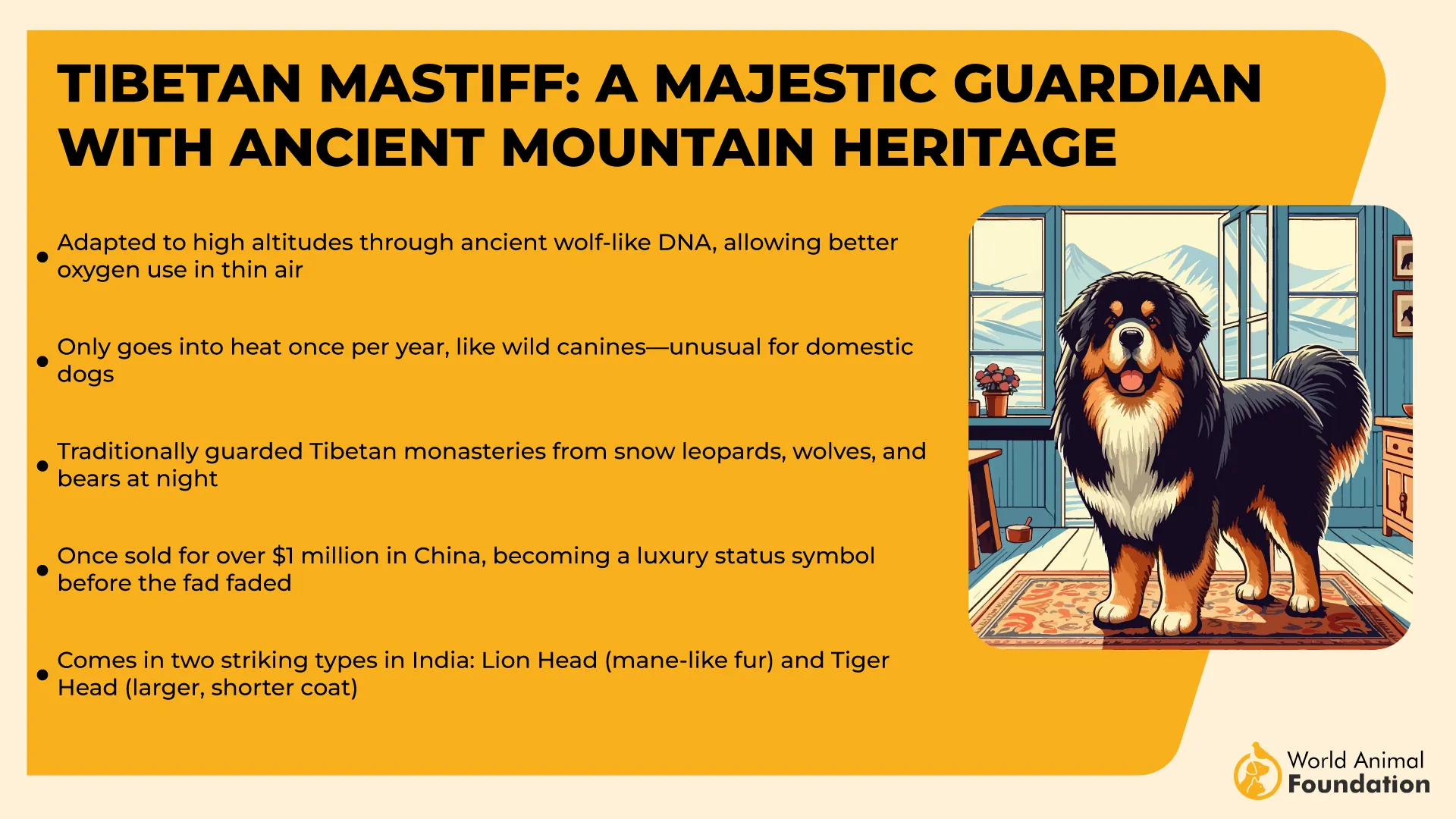
Modern Tibetan Mastiffs retain the stoic and watchful qualities of their ancestors. Aloof with strangers but loyal to their families, they are fiercely independent and can be challenging to train. Because of their rare lineage and specific needs, they are best suited for experienced dog owners who understand guardian breeds. Though harder to find in their native lands today, Tibetan Mastiffs remain one of the most majestic and formidable protectors in the canine world.
Akita vs. Tibetan Mastiff: Size and Weight Differences
The Akita is a large and powerful dog breed, instantly recognizable by its foxlike face, triangle-shaped, erect ears, thick double coat, and fluffy curled tail. Akitas are a significantly larger breed, standing 24–28 inches tall at the shoulder and weighing between 70–130 pounds.
The American Akita tends to be slightly more outgoing than its Japanese counterpart. Overall, their solid frame and confident stance make them imposing, yet their soft, plush fur gives them a deceptively cuddly appearance.
In contrast, the Tibetan Mastiff falls into the giant breed category, often outweighing even the largest Akitas. Their average weight is between 70–150 pounds, and have a commanding, upright posture.
They feature a dense, double-layer coat with a coarse outer layer and a woolly undercoat suited for harsh mountain climates. With their broad heads, square muzzles, deep-set eyes, and thick feathered tails curled over their backs, Tibetan Mastiffs are built for both strength and endurance, exuding raw, lion-like power.
Intelligence and Trainability Comparison
Both the Akita and Tibetan Mastiff are highly intelligent breeds, but their strong-willed, independent nature can make training a challenge. Akitas were bred to work independently, which means they require firm, consistent training and early socialization to prevent behavioral issues.
They are loyal and protective, but their strong prey drive and natural distrust of strangers demand that they be closely managed around unfamiliar people and other dogs. Akitas can be willful and stubborn, so they’re best suited for experienced dog owners who can establish leadership and provide structured, ongoing training, states Britannica.
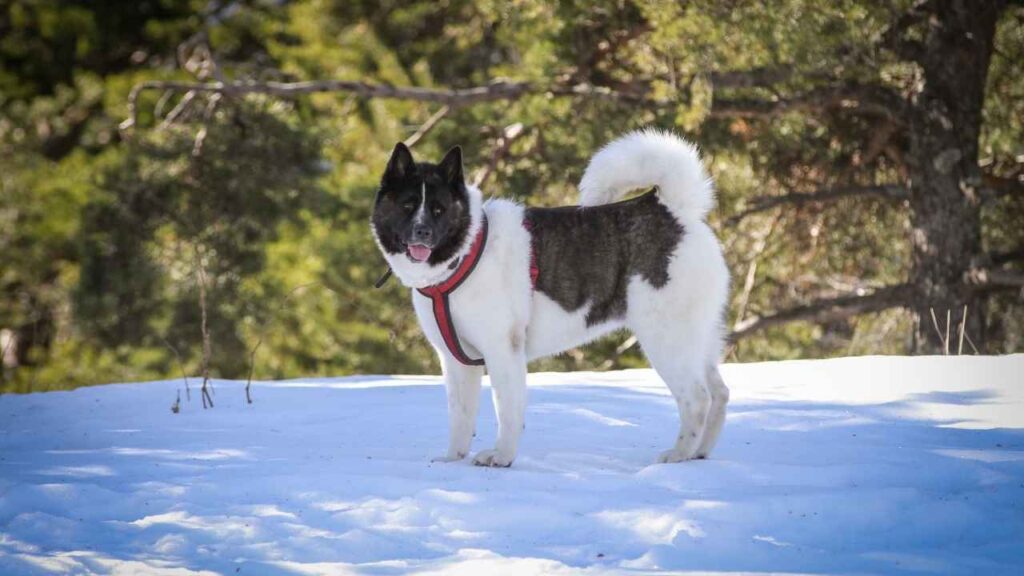
Similarly, the Tibetan Mastiff is extremely intelligent but not particularly eager to please. While they are quick learners, they prefer to act based on their own judgment rather than repetitive commands. They are not food-motivated and may perform well during training sessions only to ignore the same commands at home.
Early socialization is crucial to help curb their instinctive suspicion toward strangers. Because of their massive size and guardian nature, Tibetan Mastiffs need owners who can confidently manage their strength and uphold consistent rules throughout their lives.
Energy Requirements and Exercise Needs
The Akita is a strong, athletic breed with moderate to high energy levels that require daily physical and mental stimulation. While not hyperactive, Akitas need at least 60 minutes of daily exercise—brisk walks, interactive play, or structured activities like obedience or agility training can all help meet this need.
Despite their size, they can adapt well to smaller homes as long as their exercise needs are met. However, due to their territorial and sometimes dog-aggressive nature, Akitas should not be taken to dog parks. They thrive on companionship with their owner, so shared activities are ideal.
In contrast, the Tibetan Mastiff tends to conserve energy, preferring short bursts of activity over sustained play. These dogs enjoy patrolling their territory or engaging in light, independent work rather than structured games. They are more active in cooler weather and often remain calm and sedentary indoors.

Tibetan Mastiffs require about 30–60 minutes of daily exercise, typically in the form of relaxed walks. Because of their size and joint vulnerability, strenuous or repetitive exercise—especially for puppies—should be avoided until full maturity at around two years of age.
Bite Force and Oral Characteristics
The Akita, originally bred for hunting and protection, possesses a powerful bite force estimated between 300 to 400 PSI (pounds per square inch). This strength, combined with their large head, robust jaw structure, and muscular build, makes them capable of inflicting serious damage if provoked or poorly socialized.
Their bite force reflects their ancestry as fighting dogs in Japan, emphasizing the importance of responsible ownership and early training. While loyal and devoted to their families, Akitas have strong protective instincts and must be properly managed, especially around unfamiliar people or animals.
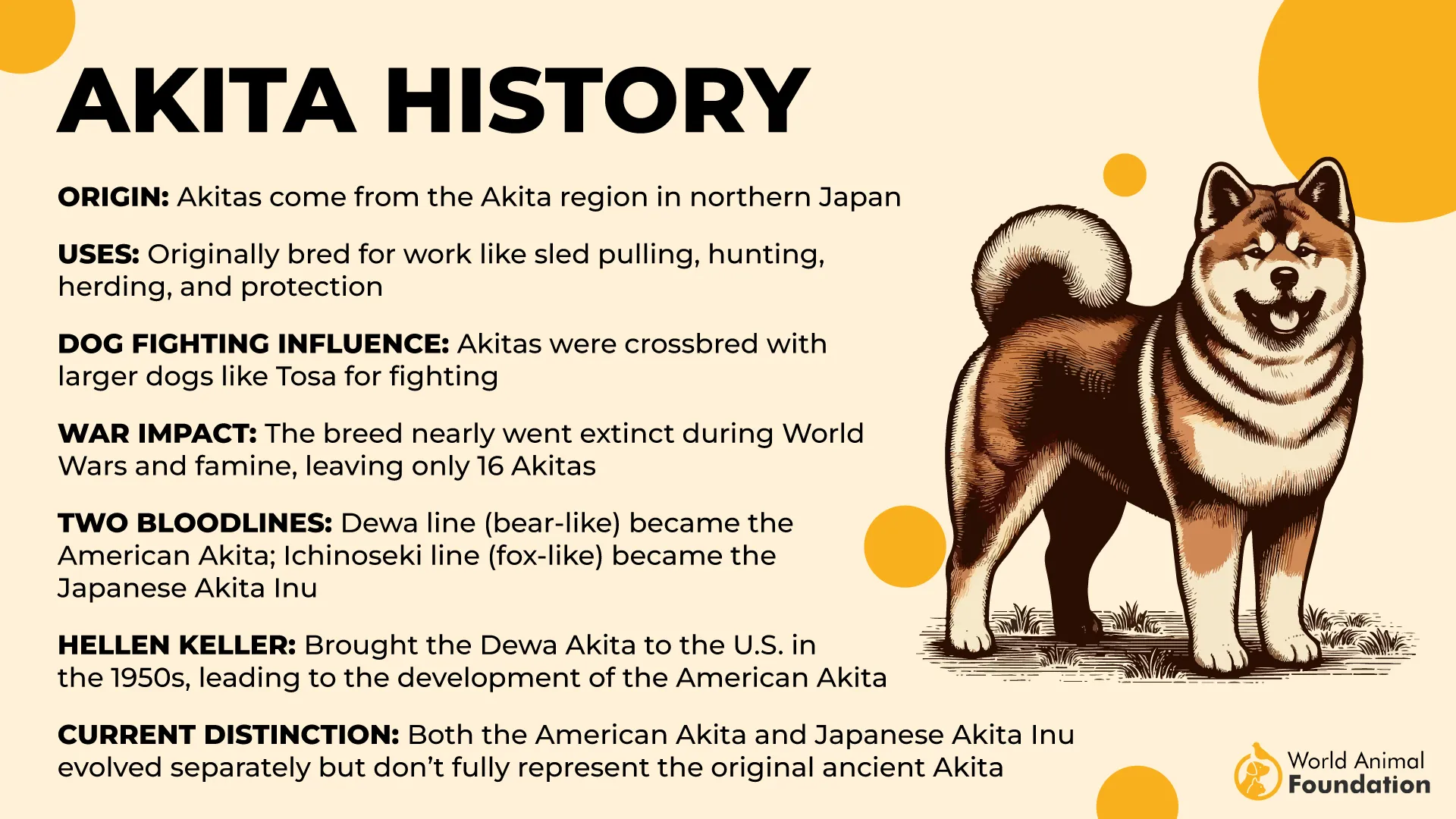
The Tibetan Mastiff, known for guarding Himalayan monasteries and estates, surpasses the Akita in bite strength, boasting an impressive bite force of around 550 PSI. Their massive, square-shaped head, thick jawbones, and deeply set jaw muscles contribute to this formidable oral power.
Despite their calm demeanour, Tibetan Mastiffs retain their innate protective nature and will not hesitate to defend themselves when they sense a threat. Their physical makeup, particularly the strength of their jaws and sheer size, underlines their role as natural guardians and adds to the importance of early socialization and control.
Health Issues and Expected Lifespan
The Akita typically lives 10 to 14 years, provided it receives proper care and comes from responsible breeding lines. While generally a healthy breed, Akitas are susceptible to several hereditary health issues. Common concerns include hip dysplasia, progressive retinal atrophy (PRA), and sebaceous adenitis, an autoimmune skin disorder.
They are also at risk for hypothyroidism, gastric dilatation-volvulus (bloat), and Von Willebrand disease, a clotting disorder. Additionally, Akitas may develop autoimmune conditions such as myasthenia gravis or uveodermatologic syndrome, which require prompt veterinary attention. Regular health screenings and early detection can help manage these issues effectively.
The Tibetan Mastiff has a slightly shorter life expectancy of 10 to 12 years and is prone to a few breed-specific health challenges. Notable concerns include entropion and ectropion, conditions that cause the eyelids to roll inward or outward, potentially leading to chronic eye irritation or infection.
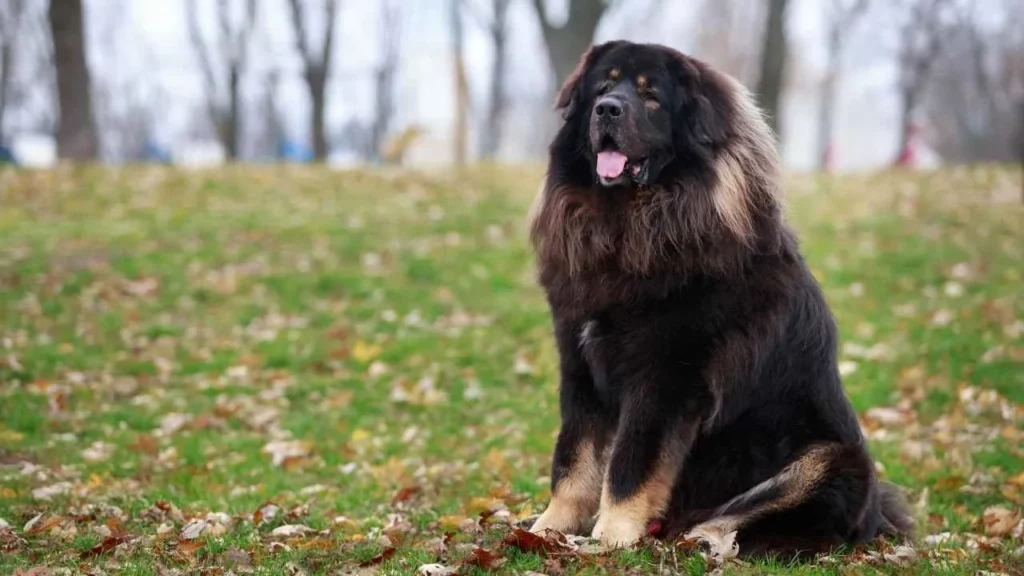
Like the Akita, the Tibetan Mastiff is also vulnerable to hip and elbow dysplasia, which can cause pain and mobility issues. Hypothyroidism is another common problem, affecting metabolism and overall vitality, states PetMD. Routine vet checkups, joint monitoring, and early intervention are essential to maintain the breed’s long-term health.
Grooming Needs and Allergy Concerns
Akitas have a thick double coat that requires consistent maintenance, particularly during seasonal shedding. While they are generally clean dogs with little odor, they shed year-round and go through two intense “coat blow” periods annually, during which their undercoat comes out in clumps. Weekly brushing is sufficient most of the year, but daily grooming is recommended during shedding seasons.
Bathing should be infrequent—about once every three months—to prevent skin dryness. Additionally, regular nail trimming, ear cleaning, and daily teeth brushing are vital for overall health. Despite their clean appearance, Akitas are not hypoallergenic, and their significant shedding can trigger allergic reactions.
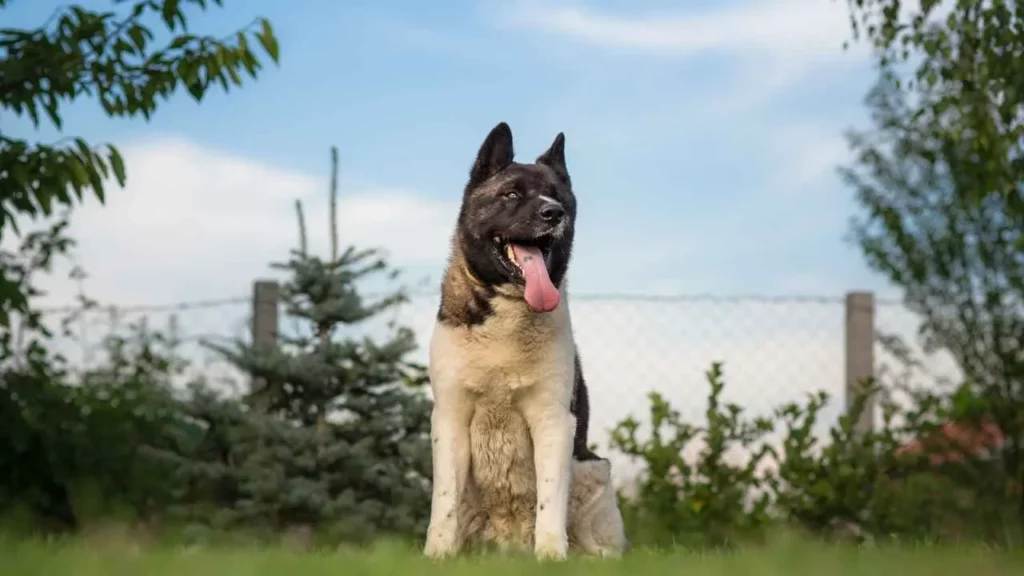
The Tibetan Mastiff, also double-coated, is surprisingly low-maintenance outside of its annual seasonal shed, which typically occurs in late spring or summer. Most of the year, weekly brushing is enough to keep their coat healthy, but during shedding season, they lose nearly all of their undercoat and require daily grooming with an undercoat rake or de-shedding tool.
Bathing during this time can help manage loose hair, but otherwise, it’s needed only when the dog gets dirty. Like Akitas, Tibetan Mastiffs also need routine nail trimming, dental care, and ear cleaning. While their shedding is less frequent, they are not hypoallergenic, and their seasonal blow can still be problematic for allergy sufferers.
Conclusion
Choosing between the Akita and Tibetan Mastiff depends on your experience level, lifestyle, and expectations from a guardian breed. Both are powerful, independent, and loyal yet often unpredictable temperaments, requiring early training, social interaction, and responsible handling.
If you’re considering one of these breeds—or even a mixed variation—it’s worth taking the time to read up on them, use reliable information, and search for expert opinion rather than going by viral videos or hearsay. These dogs are not for everyone, and things can go wrong without proper guidance. A male Akita or Mastiff, for instance, may be more dominant and harder to train.
While many find them kind and devoted to humans, others find them challenging. If you’re not sure, look into related breeds that are less intense. At the end of the day, adding one to your family shouldn’t be a rushed decision—it’s a big investment of money, mind, and heart. Make sure you’re not left wondering what could happen if you’re not ready.


